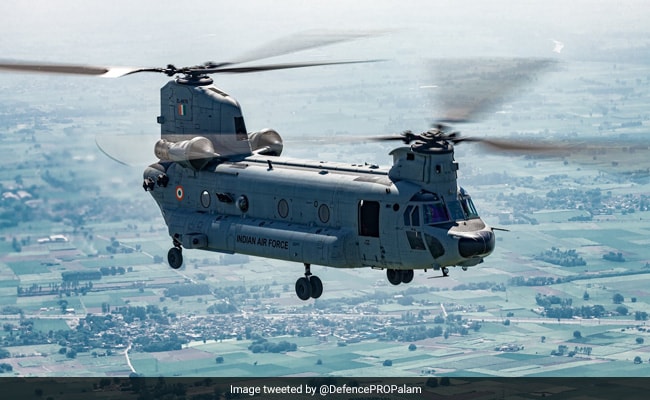
Chinook helicopter can transport up to 44 troops or 24 casualty liters (stretchers) in one sortie.
The Indian Air Force has deployed the twin-rotor heavy lift Chinook helicopter on standby at an airstrip in Uttarakhand’s Chinyalisaur, where an emergency medical centre has been set up to treat the 41 workers trapped underground in the Silkyara tunnel.
The Chinook helicopter provides the Indian Air Force with strategic airlift capability for rescue operations and has been used for humanitarian missions in the past.
Why Chinook Over Mi-17
Boeing, the manufacturer of Chinook, says that the chopper’s ability to deliver heavy payloads to high altitudes makes it suitable for operations in the high Himalayas. The Indian Air Force operates the Russian-built Mi-17 helicopters and CH47 Chinook helicopters for such operations. One of the reasons to not deploy an aircraft like the C-17, An-32 or C-130J for such an operation could be due to the limited length of the airstrip to generate takeoff for the heavy aircraft.
A vertical-lift chopper makes sense to airlift the rescue workers who are trapped for 17 days in the tunnel. The Indian Air Force acquired 15 Chinook choppers in a multi-billion dollar deal with Boeing.
The Chinook helicopter can transport up to 44 troops or 24 casualty liters (stretchers) in one sortie. If the workers are airlifted with stretchers, then at least two sorties would be required to take them to the All India Institute of Medical Sciences (AIIMS) in Rishikesh.
Meanwhile, the Mi-17 helicopter, which the Indian Air Force has used extensively for humanitarian and combat airlift operations, has a limited capacity to take around 25 troops in one sortie. The 41 trapped workers, if they are airlifted with stretchers, will increase the number of sorties and the time taken to provide them medical care at AIIMS.
The carrying capacity and high altitude operation make Chinook a better choice over the Mi-17 aircraft.
The tandem rotor design of the Chinook provides increased stability and control, maximum agility, ease of loading and unloading and superior performance in wind.
The chopper has a service ceiling (height up to which it can fly) of 20,000 feet and Boeing says it’s the only helicopter of this class to do it.
The tandem rotors, that rotated in different directions, dismisses the need to have a tail-rotor in a chopper, like in Mi-17, which is used to pull up torque (angular force) against the main rotor to keep the helicopter straight. The tandem rotors increases the weight-carrying of the helicopters as well.
2021 Tunnel Collapse In Uttarakhand
The Chinook helicopter has proven to provide quick humanitarian assistance in Uttarakhand in the past. In 2021, a tunnel in the Chamoli area of Uttarakhand was after a glacier burst blocked the tunnel with sludge and debris, trapping over 130 workers. The Chinook helicopter flew to Chamoli with 14 people and 1,400 kg of load was carried for the National Disaster Response Force and the State Disaster Response Force.

Three tonnes of load and five personnel of the Border Roads Organisation were also transported to facilitate rescue operations.
The Chinook helicopters have been deployed to supply medical aid in the higher reaches of Arunachal Pradesh amid the coronavirus pandemic.
The helicopter has been battle-tested in diverse, extreme conditions throughout the world, and has proven capability to operate in the wide range of conditions that typify the Indian subcontinent, says Boeing.




